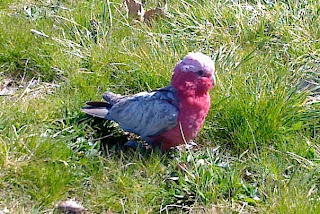 In recent years the nature of biography has become more honest and transparent, particularly in respect of accuracy, historicity and subjectivity. Autobiogs are more likely to be called memoirs, acknowledging a more limited scope or viewpoint. The fallibility of memory is more widely taken as part and parcel of the game.
In recent years the nature of biography has become more honest and transparent, particularly in respect of accuracy, historicity and subjectivity. Autobiogs are more likely to be called memoirs, acknowledging a more limited scope or viewpoint. The fallibility of memory is more widely taken as part and parcel of the game.I'm a humble chap, as you know. But in the field of memory I have been particularly reticent to blow any sort of trumpet, knowing that I have no ability to capture people, names, events or details with any degree of accuracy or reliability. I may imagine some insight into the romantic, impressionistic, artistic or literary; but try to pin me down on the who did what, when (I'm not too bad on the where) and the house of cards looks decidedly shaky.
I was reminded of this recently by my reading. Many years ago when I learned French at high school, we had a reader of selected texts - don't ask me what (that'd be detail) but I guess it was Molière and Rousseau or such.
Strangely enough, I did remember through the decades a story in French that described the death of a young prince. Author and title of this piece were, of course, lost in the mists of my impressionistic memory. But I recall a touching description of how the doors and upper windows of the young prince's grand home had been closed up. They had been closed for such a long time, presumably to keep out the cold airs and unclean mists; something was clearly amiss. Within lay the young Dauphin on his death bed, surrounded by weeping family, servants and courtiers.
One particular passage, which stuck verbatim in my otherwise perfidious memory, pictured the failing prince discussing possible alternatives with his distraught mother and sombre priest:
<< ... Est-ce que mon petit ami Beppo ne pourra pas mourir à ma place, en lui donnant beaucoup d'argent? >>
Roughly: "Couldn't my little friend Beppo die instead of me, if we gave him lots of money?"
Let's leave aside for the moment the utility of this fragment. I can't say I have trotted this phrase out regularly, as the travel dictionaries suggest, in the restaurant, at the station or at the post office. But it must have a certain ring about it to hang around.
This year, as we immersed ou
 rselves in the French language for a while and again visited French friends - half a century in my case since the schoolboy memories of Beppo, whoever he was, were laid down - I gradually came to the conclusion that those passages must have been from the classic work by Alphonse Daudet, Lettres de mon Moulin.
rselves in the French language for a while and again visited French friends - half a century in my case since the schoolboy memories of Beppo, whoever he was, were laid down - I gradually came to the conclusion that those passages must have been from the classic work by Alphonse Daudet, Lettres de mon Moulin.This cherished little book is a series of descriptive letters, anecdotes, snapshots, supposedly written from his old grain mill in the village of Fontvieille, between Avignon and Arles in Provence - not far, in fact, from Les Baux-de-Provence whence came the name of bauxite. It is a often regarded as a classic of French literature of the nineteenth century as it is full of wholesome tales of the traditional and captivating lives of peasant and poet, miller and mayor in the south of France.
On return from France I looked up Monsieur Daudet's classic and sure enough, there was the quote, word for word. OK I got one word slightly wrong ('pourra' should have been 'pourrait'), but for accuracy, after fifty years of wear and tear, it was up there amongst the médaille d'or stuff.
 Before you accuse me of reaching for my trumpet, I have an admission. I re-read the letters from Alphonse's iconic windmill with considerable pleasure only to find that my rotten memory had in fact conflated elements of two separate stories and rebuilt the imagined scene and events to suit the revised architecture.
Before you accuse me of reaching for my trumpet, I have an admission. I re-read the letters from Alphonse's iconic windmill with considerable pleasure only to find that my rotten memory had in fact conflated elements of two separate stories and rebuilt the imagined scene and events to suit the revised architecture.Despite the laser-beam accuracy of my selective useless quote, it turned out that the closed doors and windows had nothing to do with the upper room where lay a suffering prince. They were actually an extract from the introductory cadences as Daudet arrives at his mill from Paris. He observes in the opening lines that the old mill had been shut up for so long the the rabbits had concluded that the race of millers was extinct (well, it does concern people dying, so there.) Seeing the grass growing in the doorways, they had made their headquarters, a sort of strategic centre of operations says Daudet, in the shade of the windmill.
Ah well. It was a nice story or two, both remembered and re-read.
PS. Lettres de mon moulin is a delightful book, but best if you ignore (or even forget and reconstruct) reality: the idealised and optimistic picture of the rural lifestyle; the more disreputable ways of the author in real life; and the fact that he left the rabbits quite undisturbed, writing the letters in the evidently seamy suburbs of Paris.




























